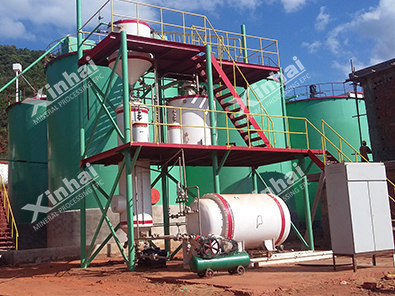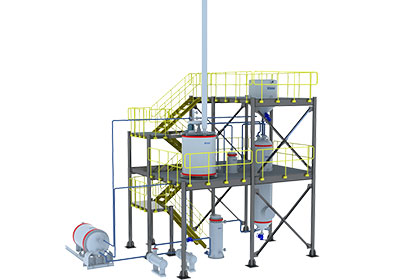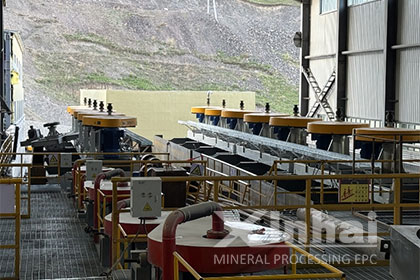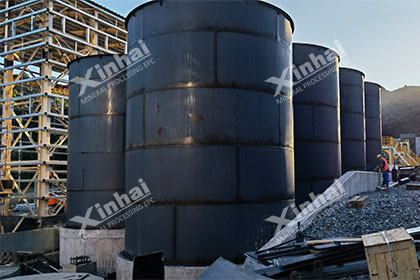How to Extract Gold from Tailing?
 Shirley
Shirley
 Mar 22, 2021
Mar 22, 2021
 3245
3245
If you want to know more details about equipment, solutions, etc, please click the button below for free consultation, or leave your requirements!
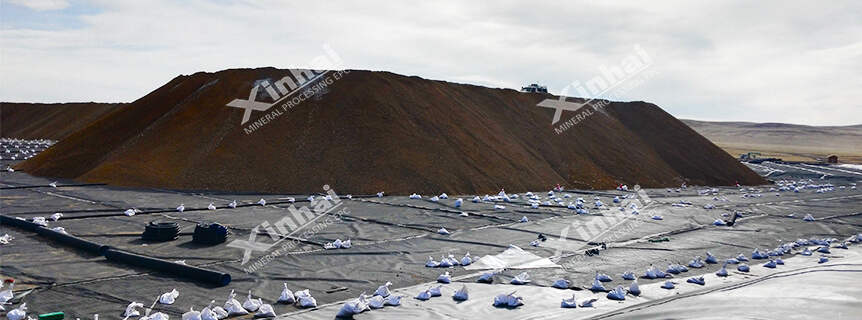
Extracting gold from tailings means continually recovering valuable gold from the gold processing plant tailings. With the increasing requirement of environmental protection, the resource utilization of cyanide tailings has become an urgent problem for enterprises. There is a certain amount of gold in cyanide tailings. Extracting gold from tailings is one of the effective ways for its resource utilization.
After roasting-cyanidation process, most of the gold in the tailings is embedded in the iron oxide inclusions and silicate (quartz) inclusions. Fully open these two inclusions is the first condition to obtain a higher gold extraction rate. Therefore, the methods of extracting gold from cyanide tailings can generally be divided into three categories: the gold extraction method from iron oxide inclusions, the gold extraction method from silicate inclusions and the comprehensive gold extraction method that can extract gold from these two inclusions at the same time.
01 Gold Extraction Method from Iron Oxide Inclusions
BackThere are three main gold extraction methods for iron oxide inclusions, which are acid leaching method, magnetic roasting-cyanide leaching method and chlorination roasting method.
(1) Acid Leaching Method
Acid leaching solution is to use sulfuric acid to dissolve the iron oxide in the tailings into the solution, the remaining tailings for cyanide gold extraction. The better the iron dissolution, the higher the gold leaching rate. This method has the advantages of simple process and small investment, and the sulfuric acid produced in the roasting-cyanide gold extraction smelting process can be reused for tailings leaching, and the raw materials are easy to obtain. However, due to the difference of iron cyanide crystal form in tailings, this method has poor adaptability to raw materials and is only suitable for specific tailings processing.
(2) Magnetic Roasting-Cyanide Leaching Method
Magnetization roasting utilizes the thermal expansion of minerals during the heating process, and the volume expansion of Fe2O3 during the process of transforming into Fe3O4, thereby causing cracks in the iron oxide coating layer and exposing the gold. If the iron cyanide content in the tailings is high, the iron concentrate can be obtained through magnetic separation after magnetization roasting, which creates conditions for the enrichment and utilization of iron in the tailings However, after the magnetized roasting slag is leached by cyanide, the cyanide leached slag needs to be decyanated, otherwise it cannot be used as the raw material for ironmaking.
(3) Chlorination Roasting Method
Chlorination roasting method is a method to control the heating temperature of chlorination process to be lower than the melting temperature of tailings, so that some components in the material react with chlorination agent to form chloride. The commonly used chlorination agents are calcium chloride and sodium chloride, etc. In the process of chlorination, it is necessary to maintain a certain chlorine content in the furnace, so this method is highly corrosive to the equipment, and the volatile chlorine-containing flue gas needs to be dechlorinated.
02 Gold Extraction Method From Silicate Inclusions
BackWhen the gold distribution rate in the tailings in the form of silicate (quartz) coating is high, the method of destroying silicate inclusions can be used to extract gold. It mainly includes two methods: alkali leaching desilication and low temperature caustic soda roasting-water leaching.
(1) Alkali Leaching Desilication Method
Alkali solution leaching desilication method is the process of using NaOH solution to dissolve silicate (quartz) in tailings under high temperature and high pressure conditions, so that silicon enters the solution, thus destroying silicate inclusions. The experimental results show that the leaching rate of silica from tailings can reach 91.8% under the conditions of liquid to solid ratio of 5:1, mass fraction of NaOH 80% and temperature 250℃. The desilication process needs to be carried out in high voltage equipment with high investment.
(2) Low Temperature Caustic Soda Roasting-Water Leaching Method
Low-temperature caustic soda roasting is to roasting the tailings after mixing with alkali, so that the silicate (quartz) in the tailings combines with alkali to form water-soluble silicate, and the sintered material is immersed in water to remove the silicate (quartz) in the tailings. The low-temperature caustic soda calcination method is carried out under low-temperature conditions, the sintering temperature is lower, and the desiliconization slag can be used as the raw material for the production of white carbon black. However, if the silicate content in the tailings is too high, the alkali consumption during the sintering process is relatively large.
03 Comprehensive Gold Extraction Method
BackWhen the gold inclusions in the tailings contain both iron oxide and silicate (quartz), it is difficult to recover the gold in the two inclusions at the same time by using the above method alone. At present, the main methods for extracting gold from two inclusions at the same time are molten chlorination method and iron smelting method.
(1) Molten Chlorination Method
Melten chlorination method takes CaCl2 as chlorination agent. After mixing CaCl2, tailings and solvents, the tailings are melted under high temperature conditions, and the gold in the tailings is converted into chloride gas to volatilize. Iron oxide and silicate (quartz) inclusion in molten state can be fully decomposable, so that the gold in the tailings can be recovered. In addition to recovering gold, molten chlorination can also recover other associated metals from the tailings. However, the temperature required for melting is relatively high, the heat consumption is relatively large, and the chlorine gas generated during the chlorination process will corrode the equipment.
(2) Iron Smelting Method
Iron smelting method refers to the process of reducing iron oxide into metal iron by adjusting the acidity and alkalinity of tailings at high temperature, in which gold is enriched in metal iron raw material and then be extracted from it. The iron making process generally requires the iron grade in tailings to reach 60%, while the iron grade in most of the tailings produced by gold smelting plants is about 40%, which is difficult to meet the economic requirements of iron making.
04To Wrap Up
BackThe above has introduced several methods for extracting gold from cyanide tailings. Since the proportions of various inclusions in cyanide tailings from different sources are quite different, it is necessary to select an environment-friendly gold extraction process with high comprehensive utilization rate on the basis of fully studying the state of gold embedded in the tailings.
If you have any questions about above content or want to know more info, please contact with the online service or sumbit your message.
 +86 183 3575 8886
+86 183 3575 8886 pinklaurabao@gmail.com
pinklaurabao@gmail.com




 Message
Message Chat Now
Chat Now



